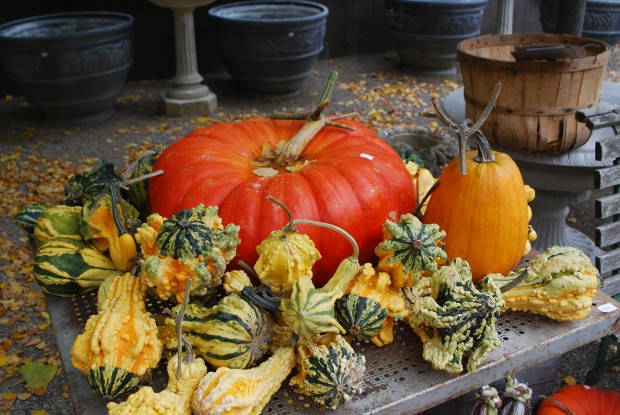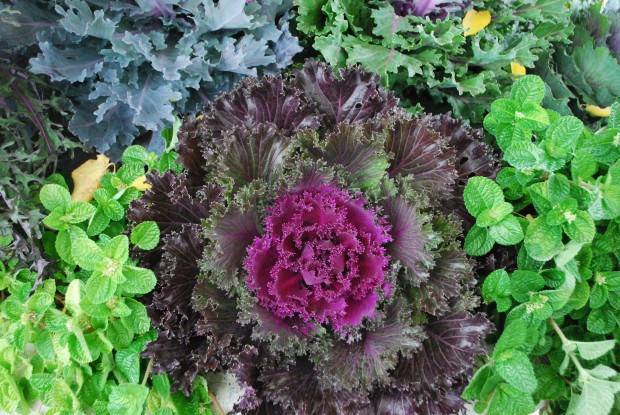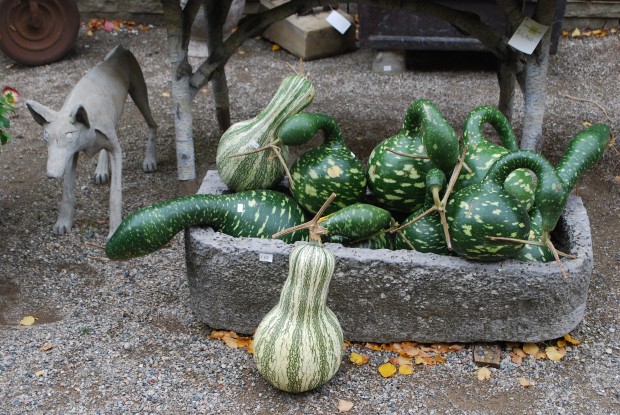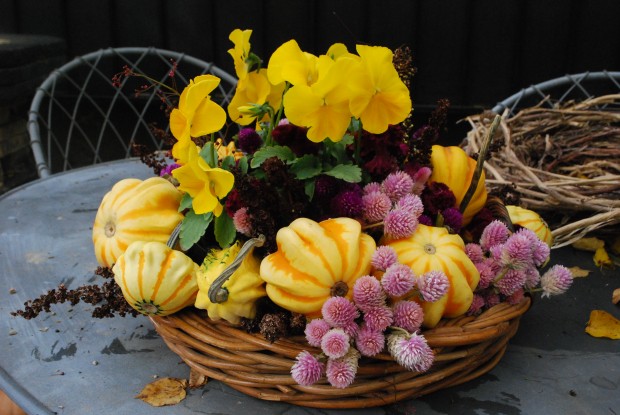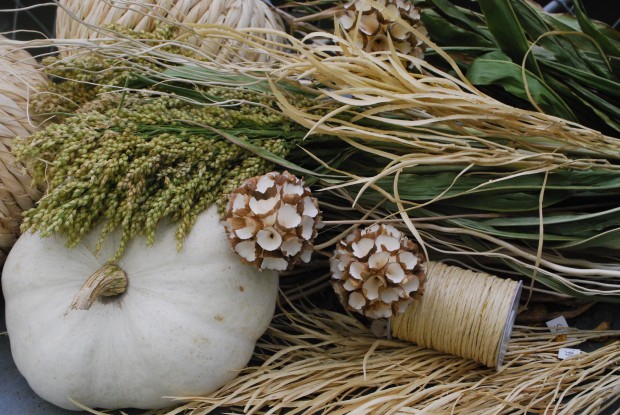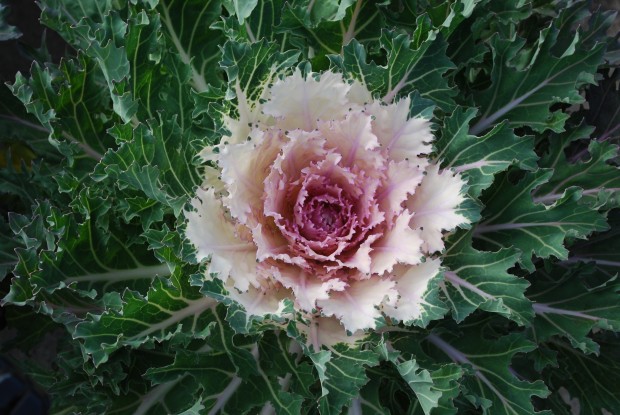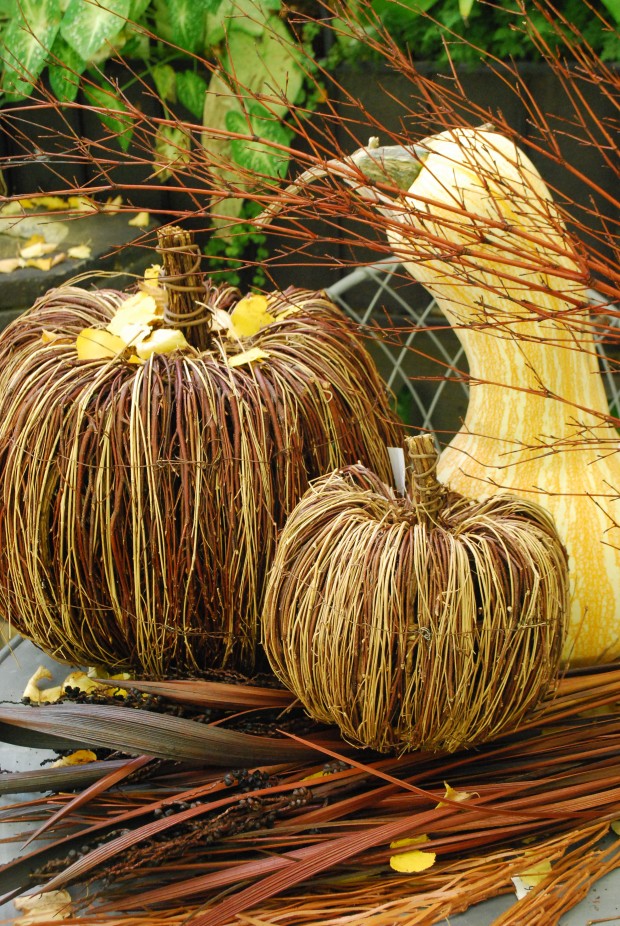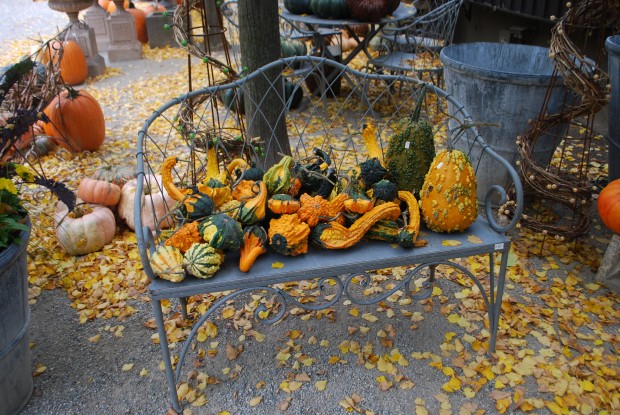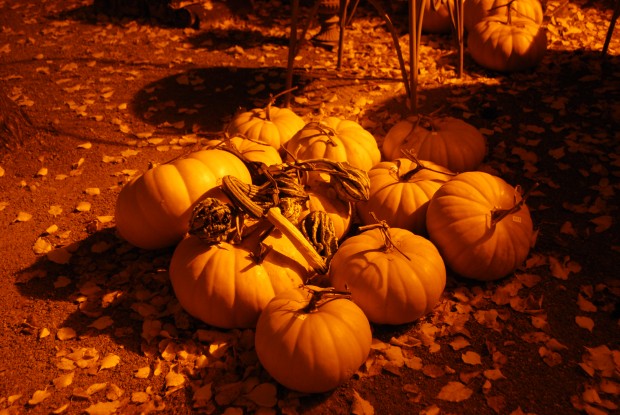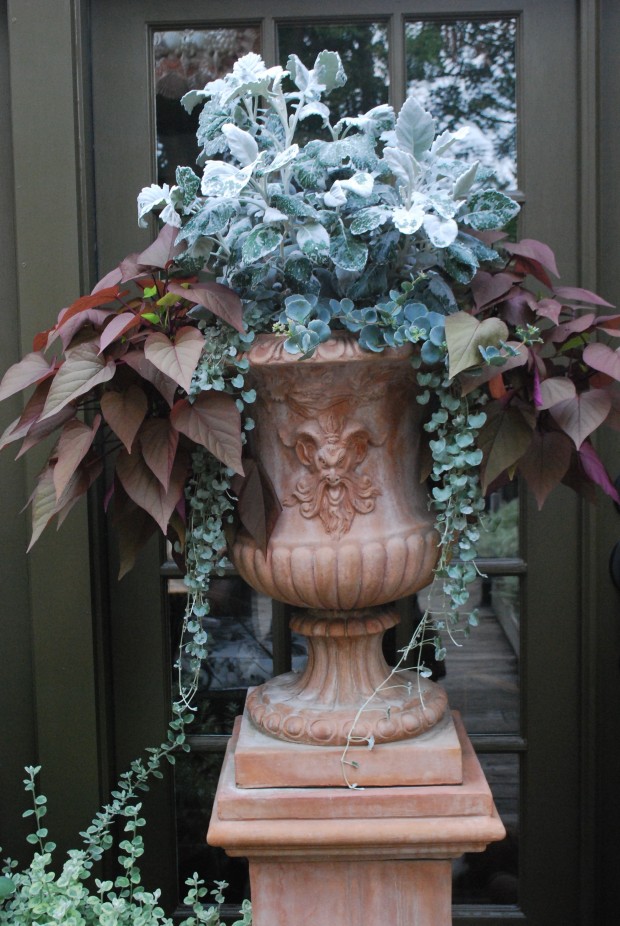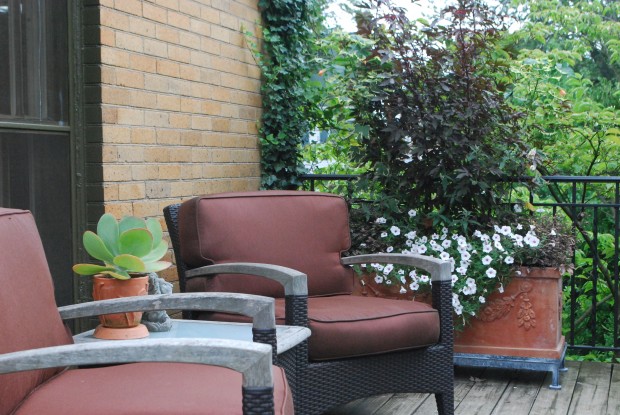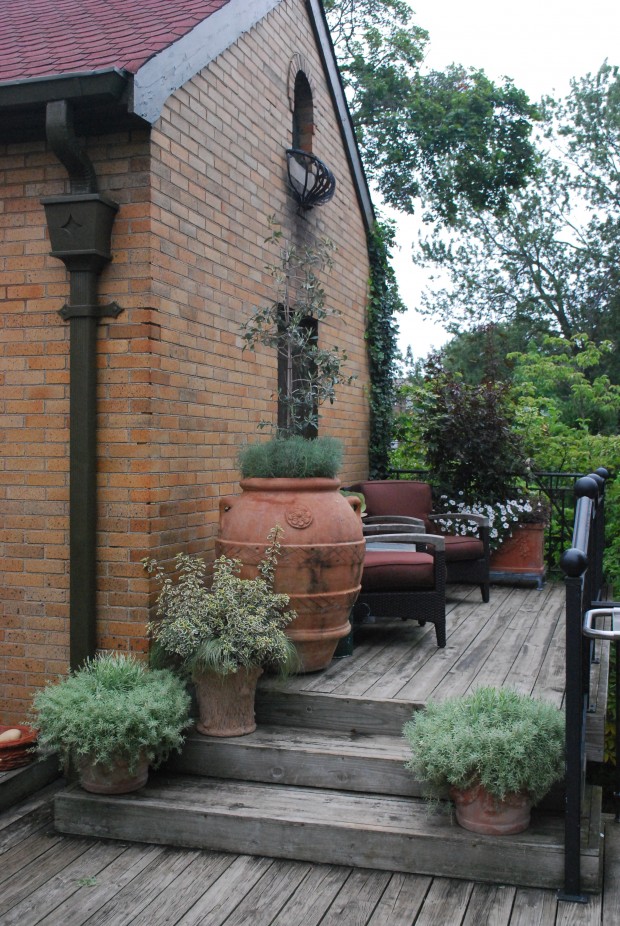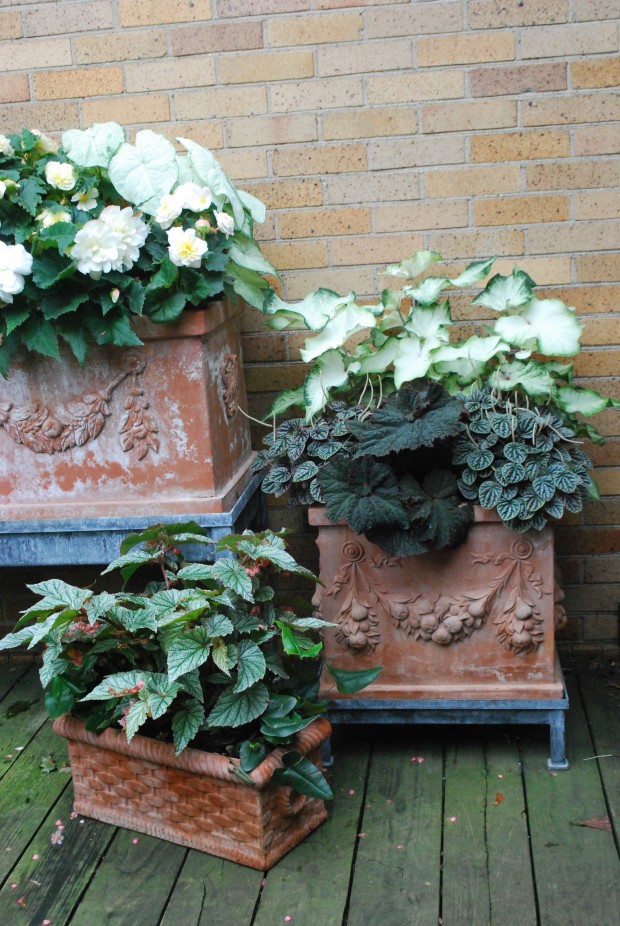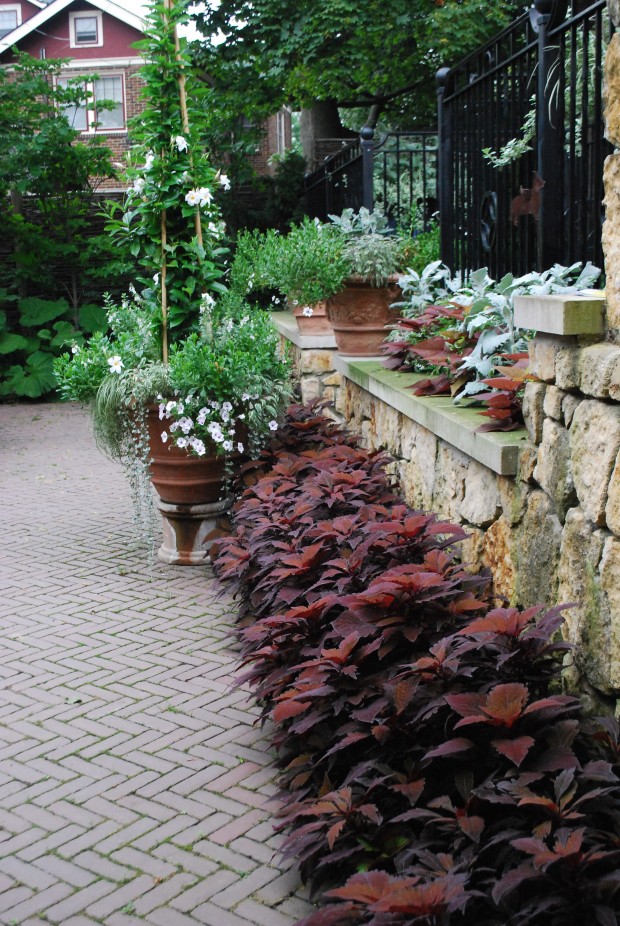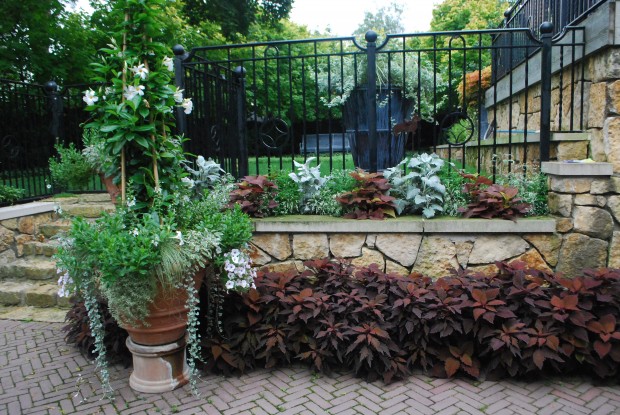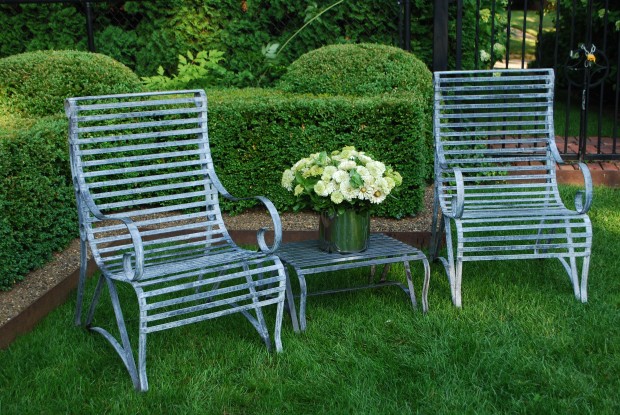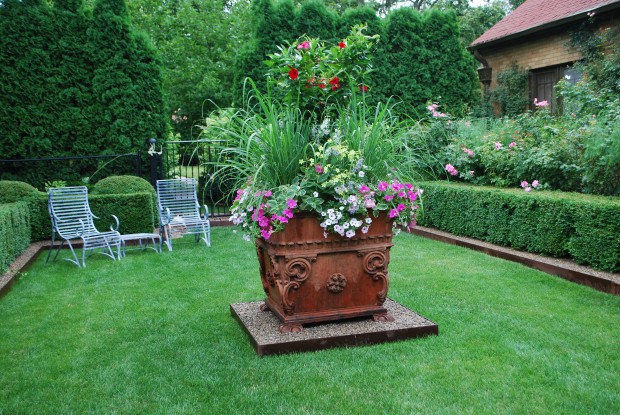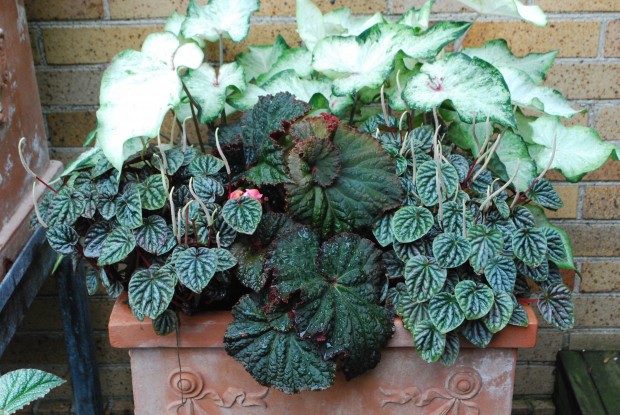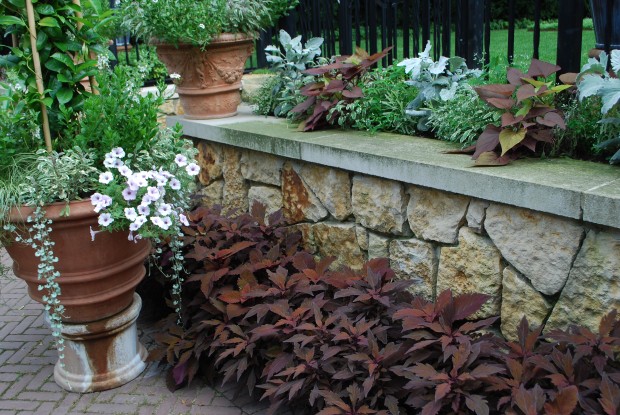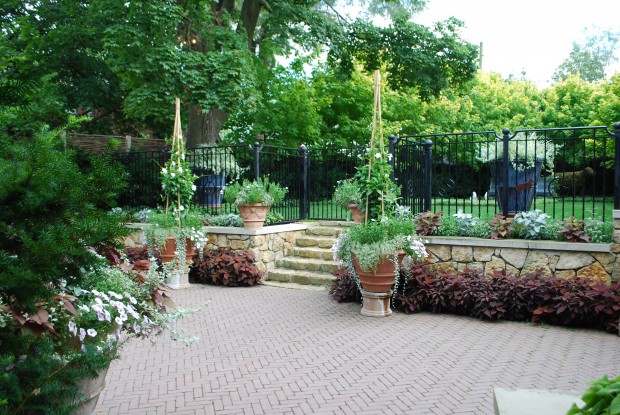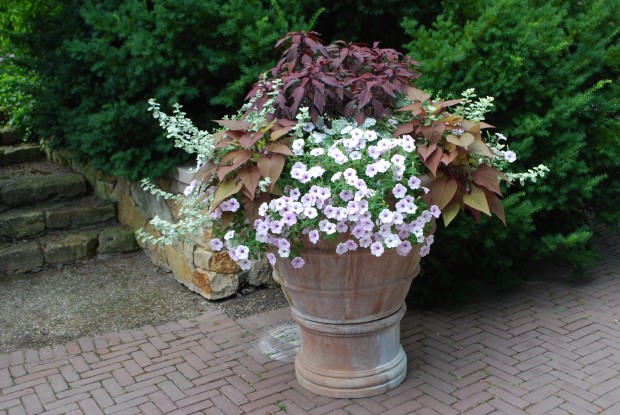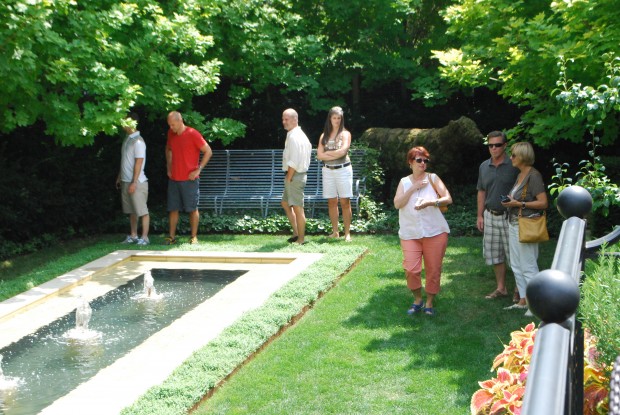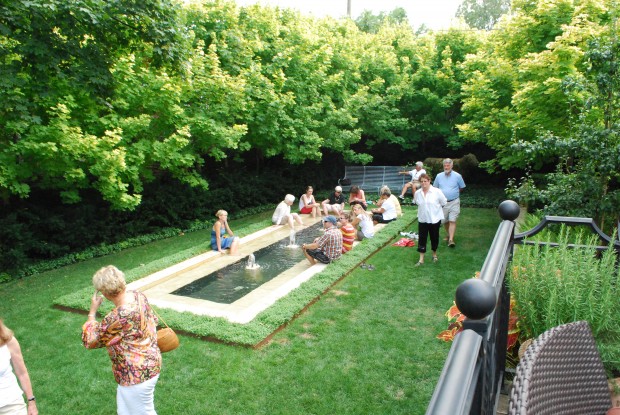Color, and color relationships, have interested me for a long time. I wore a chartreuse green crepe dress to my junior prom in 1967-no kidding. As chartreuse was an unusual color choice for a high school eventy in 1967, that dress did stand out-as did my date’s red face. I still remember how mortified I was, given the contrast with all the blue, peach and pink chiffon in attendance. Everyone reacts strongly, individually, and emotionally to color. Why else would that dress have generated so much talk? No wonder I gravitated towards the garden. Natural color always seems just that-natural. The fall foliage color of hardy plants and fall fruits and vegetables is in large part what makes the Michigan fall gardening season so spectacular.
However, not all the fruits of the harvest are orange. Many of the growers I know change up their offerings as much as they do their growing practices. Pumpkins and gourds come in so many colors that any gardener could put together a color palette pleasing to their eye. These steely blue green pumpkins of vastly different textures, paired with fresh eucalyptus, drying broomcorn leaves, and the delicate fruiting stems of Jewels of Opar-a subtle color palette that is unmistakeably fallish.
This new cabbage introduction, Glamour, is living up to its name. Given the weather, that is. Cool night temperatures produce incredibly saturated color in cold tolerant plants. Cabbage and kale in September-their color is middling, at best. Today the high temp was 49. The kales and cabbages are quickly coloring up. The creeping charlie, a lerftover from the summer planting, looks alarmed by the temperature. Its intensely green leaves seem to glow in the cold.
The green represented by my annuals, perennials and trees is fading fast. It seems a little early to me-so much fall color the first week of October. Luckily nature provides for some form of green in every season. These bird gourds will fade to a fairly uniform yellow/taupe when they dry. In their fresh state, the green color is as fresh and interesting as their distinctive shapes.
Pansies shrug off the chill. These clear sky yellow pansies are same intense color now as they are in the spring. They are fairly reliably hardy in my zone. They look great carpeting a bed of tulips in the spring. The carmine and pink gomphrena are easy to use in fall flower arrangements, as they are happy to be dry. The orange striped yellow gourds provide lots of contrast. Fairly lively this, considering that the garden is well on the way to going down.
Pumpkins other than orange are relatively new to me-years ago, I would have had my choice of this orange, or that orange. White pumpkins are a milky greenish white, and lend themselves to fall arrangements more contemplative and subtle. Though broomcorn is available in all of the traditional fall colors of russet, brown and orange/brown, this pale green version is exquisite. This color will fade given enough time to a creamy brown. The color of this wired natural raffia twine is appropriately named “straw”. Once the chlorophyll disappears from leaves and stems of grain or cereal crops, what remains is straw. Booth the byproduct, and the color.
This cabbage is unusual in its shape, but most compelling in its coloration. The center leaves of Coral King color in a way that is easy to recognize, but more difficult to describe. A brownish peachy pink, a touch of carmine, and a striking creamy white make them a beautiful plant in a fall arrangement. The leaves-verging on turquoise.
The shades of fall browns are many. The russet browns and creamy browns of these natural twig pumpkins look great with pale orange and cream yellow gourds. The dried bahia stems and their chocolate/black berries are dark and rich in color. Though all of these natural colors closely relate, the color relationships are lively-seasonal.
But by no means would I want to do without that jewel of a color we call orange in the fall. A sugar maple in full fall color, a collection of orange pumpkins and gourds, and the fall color on the Boston ivy soon to come which will feature the most amazing yellow/coral color imaginable. It wouldn’t be fall without the orange.
The light from the shop light fixtures early this morning-just as orange as this pile of pumpkins. The light given off by the lamps is not at all like this in the spring, summer, or winter. Go figure.
